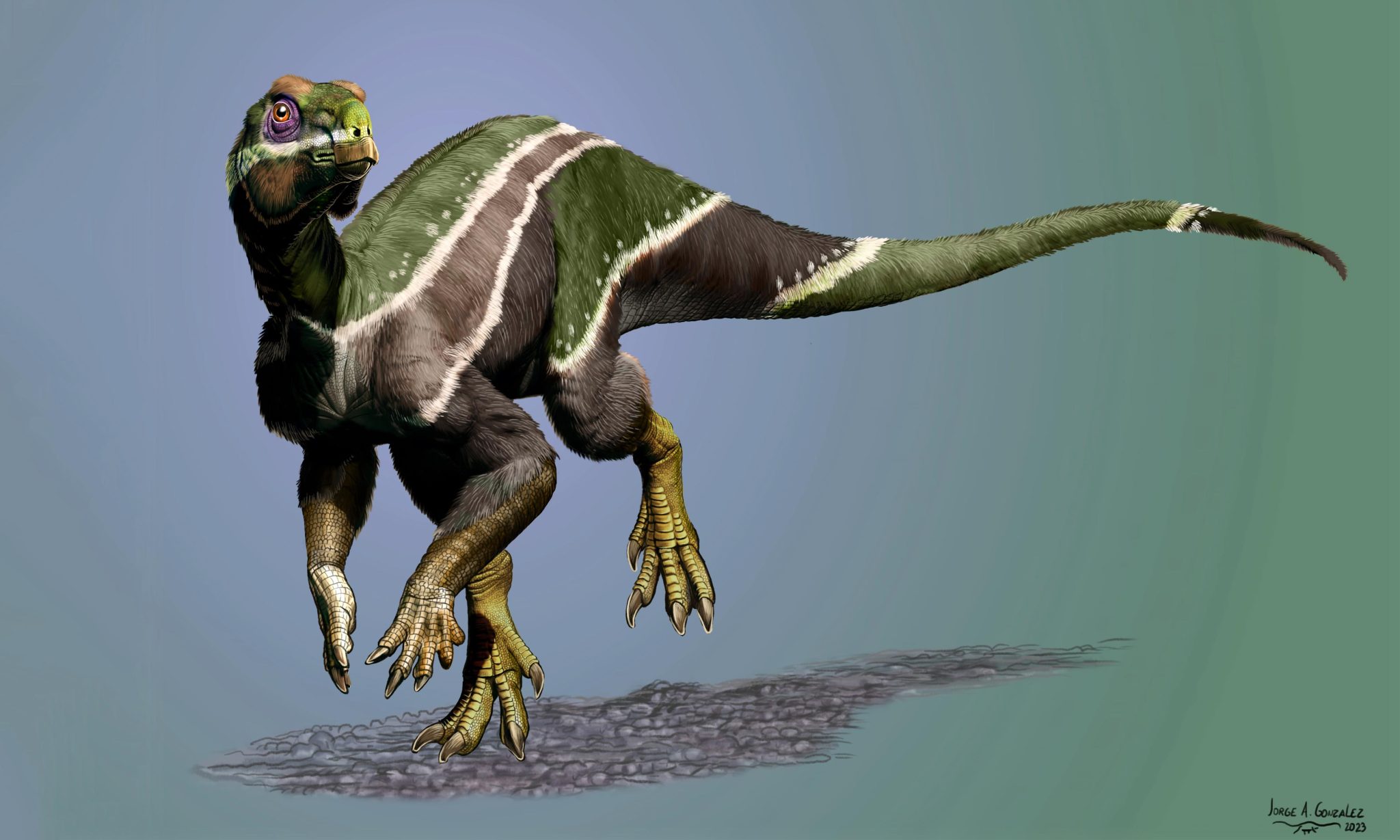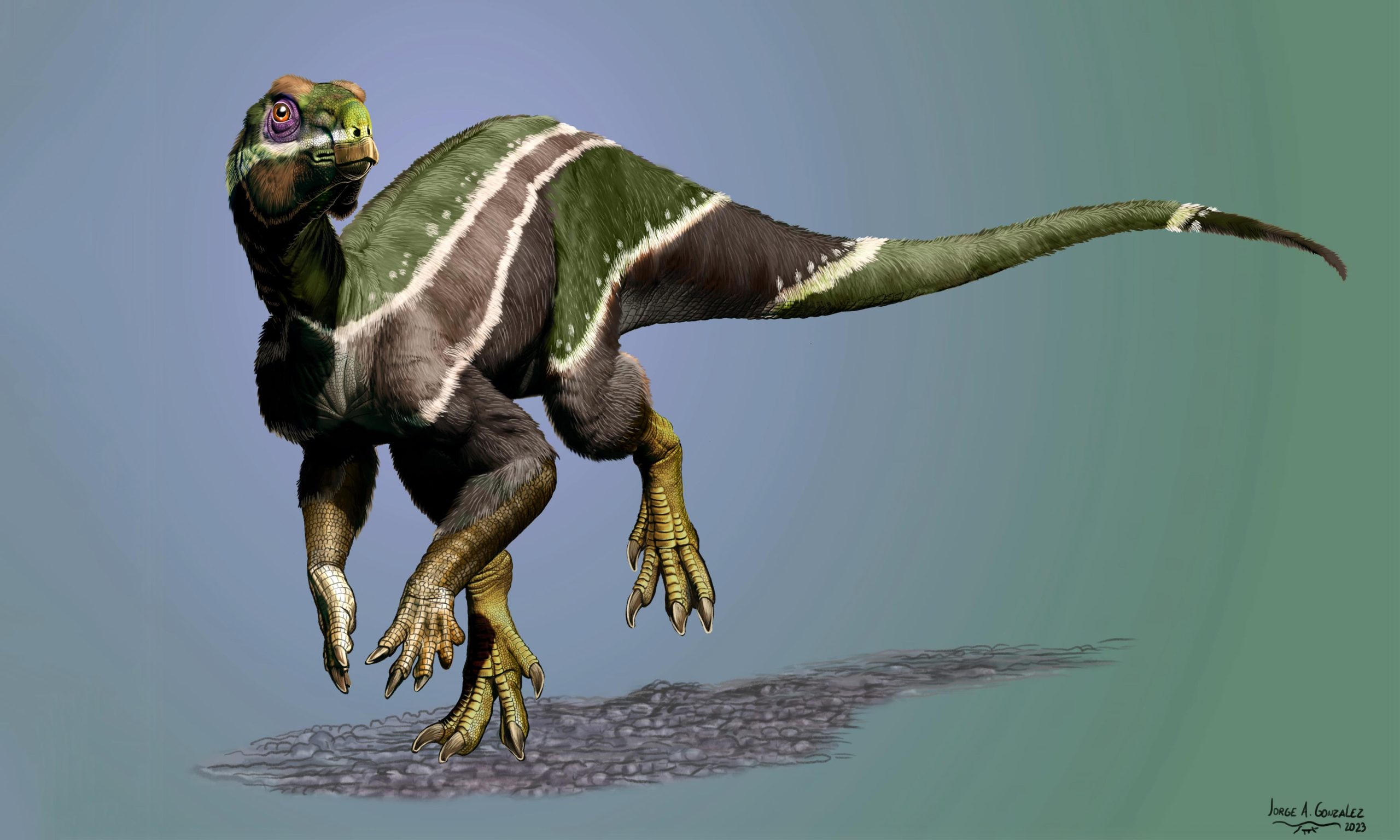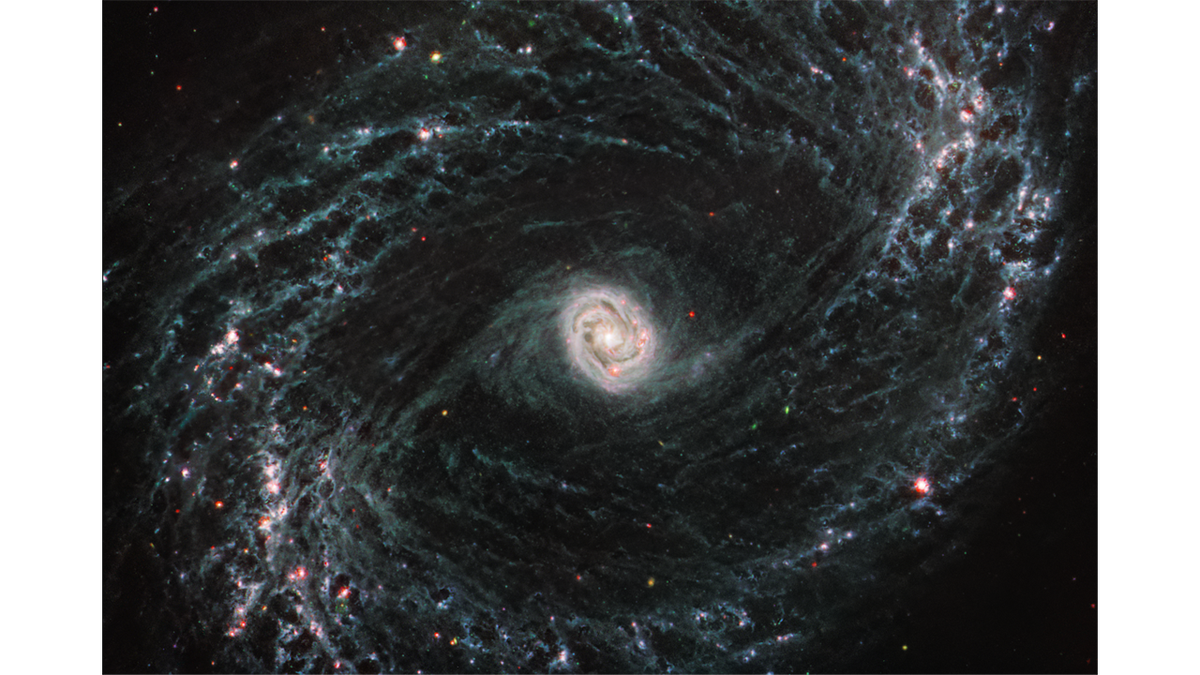El dinosaurio recién descubierto Iani puede ser el «último suspiro» de la especie en un planeta cambiante

Reconstrucción del artista Herrería Ianni. Este dinosaurio ornitópodo primitivo recientemente descubierto puede representar la última resistencia de la especie durante el período de calentamiento global a mediados del período Cretácico, hace aproximadamente 99 millones de años, lo que condujo a cambios drásticos en las poblaciones de dinosaurios. Crédito: Jorge González
dinosaurio recién descubierto, Herrería IanniVivió durante las convulsiones climáticas del medio[{» attribute=»»>Cretaceous era and might be the last of its lineage, replaced by duckbill dinosaurs. This dinosaur, found in Utah, represents a critical transitional period in dinosaur history, affected by rising CO2 levels, global warming, and shifting dinosaur populations.
A newly discovered plant-eating dinosaur may have been a species’ “last gasp” during a period when Earth’s warming climate forced massive changes to global dinosaur populations.
The specimen, named Iani smithi after Janus, the two-faced Roman god of change, was an early ornithopod, a group of dinosaurs that ultimately gave rise to the more commonly known duckbill dinosaurs such as Parasaurolophus and Edmontosaurus. Researchers recovered most of the juvenile dinosaur’s skeleton – including skull, vertebrae and limbs – from Utah’s Cedar Mountain Formation.
Iani smithi lived in what is now Utah during the mid-Cretaceous, approximately 99 million years ago. The dinosaur’s most striking feature is its powerful jaw, with teeth designed for chewing through tough plant material.
La mitad del período Cretácico fue una época de grandes cambios, que tuvo un gran impacto en las poblaciones de dinosaurios. El aumento de dióxido de carbono en la atmósfera durante este tiempo hizo que la temperatura de la Tierra aumentara y los niveles del mar aumentaran, lo que provocó que los dinosaurios ocuparan áreas terrestres cada vez más pequeñas. Hacía tanto calor que las selvas tropicales florecían en los polos. La vida vegetal en flor se apoderó de las áreas costeras y reemplazó las fuentes naturales de alimento para los herbívoros.
En América del Norte, los saurópodos gigantes herbívoros, que alguna vez fueron titanes del paisaje, estaban desapareciendo, junto con sus depredadores alosaurios. Al mismo tiempo, herbívoros más pequeños, como los antiguos dinosaurios con cuernos y pico de pato, y terópodos emplumados como los tiranosaurios y los enormes oviraptorosaurios, también llegaban desde Asia.
Entra Herrería Iannies único no solo porque se descubrió recientemente, sino también por su rareza en el registro fósil de América del Norte y su lugar en la historia de los dinosaurios.
«Hallazgo a mí Fue una racha de suerte. Sabíamos que algo así vivía en este ecosistema porque se recolectaron dientes aislados aquí y allá, pero no esperábamos tropezar con un esqueleto tan hermoso, especialmente de esta época en la historia de la Tierra. Tener un cráneo casi completo fue invaluable para armar la historia”, dice Lindsey Zano, profesora asociada de investigación en[{» attribute=»»>North Carolina State University, head of paleontology at the North Carolina Museum of Natural Sciences, and corresponding author of the work.

The lower jaw and teeth of new dinosaur Iani smithi. Credit: National Geographic, Mark Thiessen and Becky Hale
Zanno and her team used the well-preserved skeleton to analyze the evolutionary relationships of Iani and were surprised – and a bit skeptical – of the results.
“We recovered Iani as an early rhabdodontomorph, a lineage of ornithopods known almost exclusively from Europe,” Zanno says. “Recently, paleontologists proposed that another North American dinosaur, Tenontosaurus – which was as common as cattle in the Early Cretaceous – belongs to this group, as well as some Australian critters. If Iani holds up as a rhabdodontomorph, it raises a lot of cool questions.”
Key among these is, could Iani be a last gasp, a witness to the end of a once successful lineage? Zanno thinks that studying this fossil in the context of environmental and biodiversity changes during the mid-Cretaceous will give us more insight into the history of our planet.
Iani smithi is named for Janus, the two-faced god who symbolized transitions – an apt name, given its position in history.
“Iani may be the last surviving member of a lineage of dinosaurs that once thrived here in North America but were eventually supplanted by duckbill dinosaurs,” Zanno says. “Iani was alive during this transition – so this dinosaur really does symbolize a changing planet.
“This dinosaur stood on the precipice,” she says, “able to look back at the way North American ecosystems were in the past, but close enough to see the future coming like a bullet train. I think we can all relate to that.”
Reference: “An early-diverging iguanodontian (Dinosauria: Rhabdodontomorpha) from the Late Cretaceous of North America” by Lindsay E. Zanno, Terry A. Gates, Haviv M. Avrahami, Ryan T. Tucker and Peter J. Makovicky, 7 June 2023, PLOS ONE.
DOI: 10.1371/journal.pone.0286042
The work appears in PLOS ONE and was supported by the National Science Foundation. Zanno is lead author as well as corresponding. Terry Gates and Haviv Avrahami, both of NC State and the North Carolina Museum of Natural Sciences, along with Ryan Tucker of Stellenbosch University and Peter Makovicky of the University of Minnesota, also contributed to the work.

«Zombieaholic. Nerd general de Twitter. Analista. Gurú aficionado de la cultura pop. Fanático de la música».





